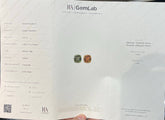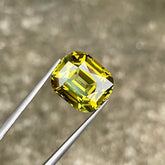Best things to look for in Rough Gem Stones
All about Rough Gem Stones
Gemstone: A gemstone is a precious or semiprecious stone that has been cut, polished, or modified to be used as a personal insignia or as decoration. In the Gemstones world, the stones are divided into three sections, i.e., Faceted Gems, Rough Gems, and Specimens. In this article, we will focus on Rough / Raw Gemstones.
Rough Gemstones: A gemstone in its purest form that has not yet been cut or polished; referred to as rough gemstones.

Things to look for in Rough Gemstones:
Good Color, Good Clarity, Good Shape, and Good Size are typical, desirable traits in rough gemstones.
Good Color: Your eye will automatically find the most expensive stones because “Pretty” is in the eye of the viewer. Color is the key to any colored gemstone. According to a survey, around 60% of gems are evaluated on their color, so look at color carefully, in different lighting conditions, because a gemstone will probably look different under lamp light than under sunlight.
Color distribution: Gems and minerals usually display uneven color distribution, caused by other aspects, such as:
- Color zoning
- Sectoral color distribution
- Irradiation Factor
Color zoning: During crystal growth, variations in the chemical and physical environment can cause color changes. The most apparent cause is variation in the chromophore elements that causes the more or less intense color in various growth zones of the same crystal.
In some gems, color zoning resembles different saturations of the same color, which can be easily seen by the naked eye or under the microscope. Color zoning can be broad or narrow; it can be uniformly formed in any direction or have very different thicknesses depending on its crystallographic orientation, as a result of unequal growth velocity on crystal faces.
Commonly the uneven color distribution affects crystal value or quality factors; cutters try to avoid color zoning visible from the crown. However, for some gemstones, like tourmaline, color zoning can become very profitable when two or more different colors are clearly visible.

Sectoral color distribution: During the initial stages of crystal formation, the growth sector can be characterized as a pyramid with the base assisting the crystal face and the apex in the center of the crystal. However, in most cases, the shapes of the growth sector are more complicated due to variations in crystal habit. Different growing levels in a crystal have different capacities to consolidate impurities.
As a consequence, growth sectors formed by crystals usually have different chemical compositions, which will also cause variations of physical properties, like color and refractive index. The sectorial color distribution is a normal phenomenon in many gemstones. It is also responsible for a particular gem variety, such as ametrine, where the same quartz citrine and amethyst coloration is observed in different growth sectors. Check out more about the rough gemstones.
Irradiation Factor: Irradiation is also one of the most common treatment for gemstones, applied to a wide variety of gemstones to produce or intensify their color. Natural irradiation, in many cases, causes non-homogeneous coloration because certain parts of the crystal may stay in closer contact with the source of irradiation. Different types of ionizing radiation can provoke the creation of optically active centers in minerals, changing their color. Radioactive decay in mineral deposits is the main reason of naturally occurring blue topaz, smoky quartz, and green diamonds, etc.
The penetration potential of various types of radiation is very dynamic; for example, Gamma rays and neutrons pass effortlessly through large crystals and provide homogeneous color distribution. Rough gemstones are rich in Beta rays, which only penetrate to a minimum depth in minerals when they are used for diamond treatment, producing color concentrates in a very thin layer close to the surface, usually on the pavilion. Lastly, alpha rays have low penetration power and are not suitable for gem treatment.

Good Shape: Definitely, you will want a rough gemstone that’s “blocky” or “rounded”. Flat or twisted shapes gemstones with deep pits or valleys will yield very poorly.
Good Size: Everyone has their own opinion about the size of a rough gemstone. Rough gemstone traders will usually say you’ll get a 1-carat gem from a 2-carat rough stone. While some cutters will always claim such feats, any cutter who keeps records of actual weights knows the truth. The industry standard for commercial cutting is a 20% yield, meaning 80% loss of weight. If you want a 1-carat gemstone, then you should buy a rough gemstone of at least 5 carats. So, rough gemstones are available in your desired size.
Clarity: You want a gemstone that’s flawless and “clean” of any inclusions. Flaw breaching the surface of a gemstone is terrible because it hampers light at the surface as well as internally. A perfectly clean gemstone is challenging to find and is not necessarily the target. The aim is the overall presentation and beauty of a gem; in general, flaws and inclusions are things we should avoid while purchasing or removing during the cutting.
















Leave a comment
Please note, comments need to be approved before they are published.